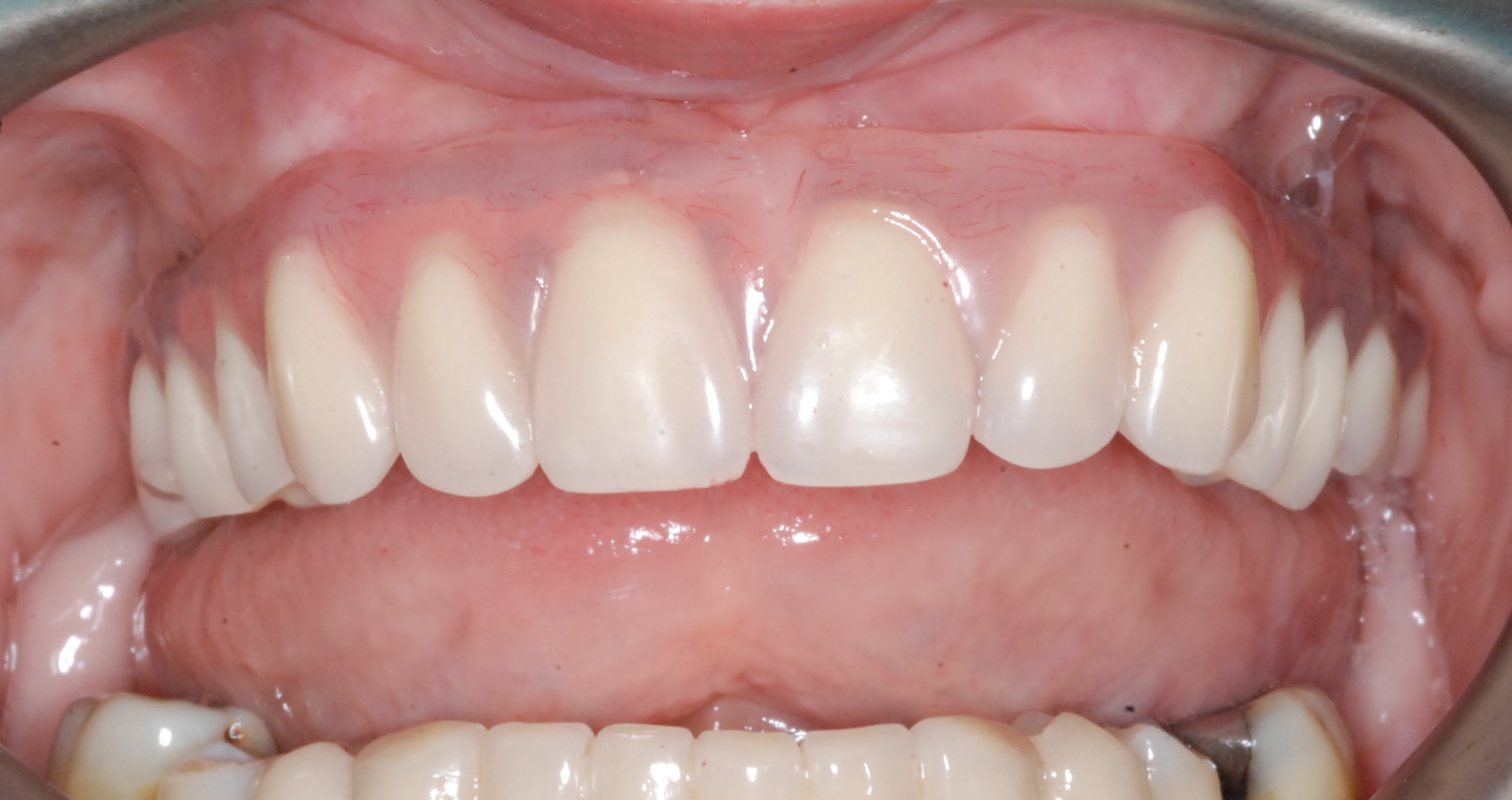Implantology
A dental implant is an artificial tooth root that is made of titanium and is placed in the jawbone to support a replacement tooth. Implants are the most advanced and predictable way of replacing missing teeth. The high level of comfort and esthetics that are routinely obtained with implants often allow recipients to forget that these are not their natural teeth.

Esthetics
It is often impossible to differentiate an implant-supported tooth from a natural tooth. This is due to the fact that implants create a bond with the surrounding bone, allowing the replacement tooth to emerge from the gums, thus creating a very natural look.
Preservation of the natural tooth structures: a conservative treatment
Unlike traditional restoration (fixed bridges and partial dentures), dental implants allow us to replace the missing tooth or tweet without damaging or destroying the dental structure of adjacent teeth.
Preservation of the bony structures
Following the loss of the natural teeth the jawbone begins to shrink, affecting not only the function of the surrounding teeth, but also the external appearance of the face (often causing wrinkles). Dental implants are the only tooth replacement option available which can stop the bony shrinkage caused by tooth loss.
Mastication, comfort
Since dental implants are firmly anchored in the jawbone, any food can be chewed with comfort and with confidence. In addition, implant-supported restorations do not require the palate to be covered as it is with conventional dentures. This allows all the taste buds in the palate to remain uncovered, which greatly improves the taste of food.
Predictability, longevity
The success rate of implants is very high (92 % à 98 %), which make them a choice option for the replacement of missing teeth. Moreover, with a regular follow-up and dental care, implants can last a lifetime.
Symptoms
ONLY ONE TOOTH MISSING
In this situation, a dental implant will be able to replace the space without having to damage the adjacent teeth. Once integrated, your dentist will use this implant to support a laboratory fabricated porcelain crown. Once all the work completed, you will be able to use the implant as if it was a natural tooth.
MULTIPLE MISSING TEETH
As opposed to removable partial dentures, the use of dental implants to restore a large edentulous space will allow you to comfortably chew food. This prosthesis will not have clasps or palatal coverage, which will make it even more esthetic, comfortable and enjoyable while you eat.
Before and after intervention cases
ALL TEETH ARE MISSING
The use of implants to support a full arch prosthesis allows us to offer you a durable and comfortable solution. The dental implants will stabilize the prosthesis so that it will not move during mastication. Depending on the patient’s desire, the clinical situation and the amount of implants being placed, it will be possible to fabricate a fixed prostheis (impossible to remove by the patient) or a hybrid prosthesis (removable by the patient to facilitate maintenance).
Before and after intervention cases
Treatment
EXTRACTION AND SOCKET GRAFT
To prevent the bone resorption that happens following a dental extraction, your periodontist will carefully extract the tooth in an atraumatic way in order not to damage the bone structure. In the majority of the cases, we will perform a bone graft inside the tooth socket at the time of the extraction. The objective is to preserve the jawbone architecture which will allow an ideal implant placement, and therefore, an optimal fonctionnal and esthetic result.
Before and after intervention cases
BONE GRAFT
In the case where there is an insufficient bone quantity to proceed with the implant placement, we will have to augment the area with a bone graft. Depending on the clinical scenario, this step might be performed prior or simultaneously with the implant placement.
Before and after intervention cases
SINUS LIFT
The maxillary sinuses represent two anatomical structures located in the posterior area of the upper jawbone. In certain cases, their position and architecture might result in an insufficient amount of bone to place dental implants. A minor surgery will allow us to graft bone to obtain the necessary bone height and volume to place dental implants. Depending on the case, this procedure may be done prior or simultaneously to implant placement.
Before and after intervention cases
IMPLANT PLACEMENT
The first step consists of placing the implant in the jawbone. Depending on the clinical situation, the implant might be left exposed to the oral cavity or covered by gingival tissue. The time for the integration (fusion between the implant and the bone) varies between 2 to 6 months.
LAYING OF THE FINAL RESTORATION
Once integrated into the bone implant, the restorative dentist will proceed with the manufacture of the crown or the final prosthesis.
Before and after intervention cases
IMMEDIATE IMPLANT
In some cases, it is possible to place the implant immediately after extraction of the tooth. This approach reduces the healing time between extraction and the manufacture of the final crown. Careful case selection is necessary in order not to compromise the longevity and quality of the result.
Before and after intervention cases
IMMEDIATE DELAY
In some cases where the strength of the implant during its installation is sufficient, it is possible to place an immediate temporary crown and avoid the temporary replacement of the tooth with a removable prosthesis. We will be happy to assess whether this approach is to your advantage.
Before and after intervention cases
IMMEDIATE LOADING
In cases where all the teeth of a jaw, high or low should be replaced by a prosthetic implant, it is often possible to make a fixed prosthesis immediately after tooth extraction and implant placement. This approach is very interesting because it completely avoids the removable prosthesis (denture) during the bone healing period and without affecting the success rate.
Before and after intervention cases
Before and after intervention
Esthetics


One tooth missing





Multiple missing theeth



All teeth are missing




